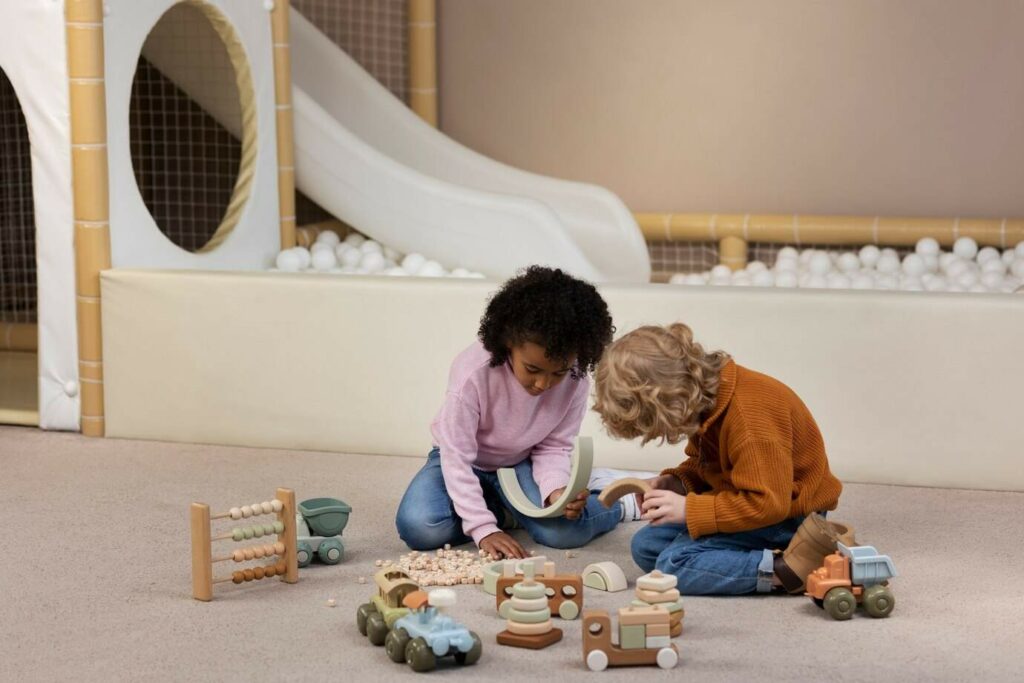Picture a lively indoor playground where kids laugh, explore, and immerse themselves in imaginative worlds. Creating that magic starts with thoughtful choices, not only in layout but also in the types of play elements included. Custom soft play equipment designs make it possible to shape these spaces with care and creativity, tailored to meet unique needs. In this blog, we’ll explore tips and the latest 2025 trends to help you build a captivating, one-of-a-kind play area.
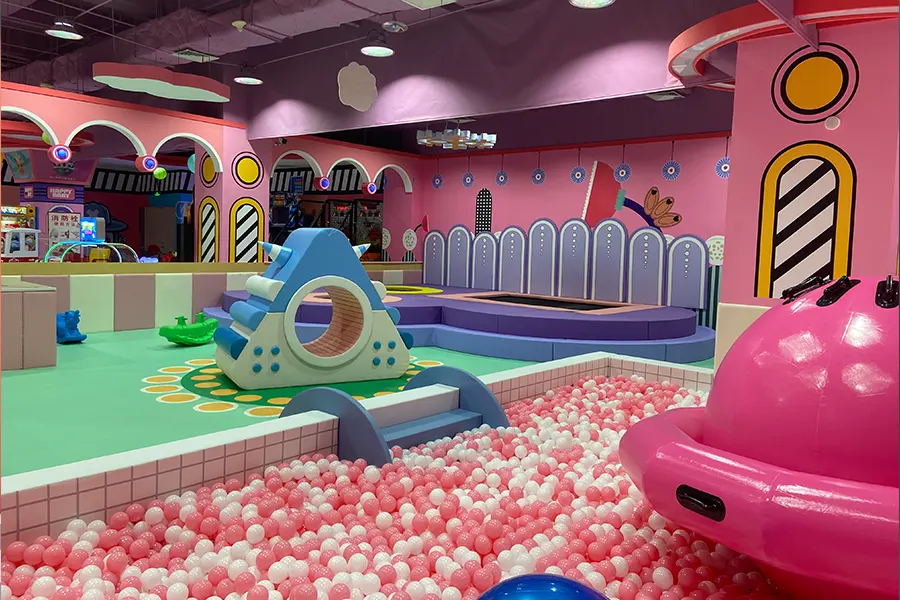
Why Choose Custom Soft Play Equipment?
Custom soft play equipment allows businesses to create tailored play areas that cater specifically to their audience, making each play zone memorable. This approach offers numerous advantages, enhancing the play experience for children and boosting business appeal.
Benefits of Custom Soft Play Equipment:
- Unique Branding: Tailor play spaces to reflect your brand’s style, making your facility stand out.
- Enhanced Engagement: Custom designs cater to specific age groups, interests, and developmental needs.
- Adaptability: Easily adjust or expand elements over time as trends or audience preferences evolve.
- Increased Safety: Design to fit exact spaces, reducing hazards and ensuring child safety.
- Competitive Edge: Customization creates a memorable experience that attracts and retains visitors.
8 Commercial Soft Play Designs Popular in 2025

Commercial soft play designs in 2025 are embracing innovation, inclusivity, and multi-sensory experiences. As the demand for interactive and unique play zones grows, the latest designs focus on enhancing both entertainment value and developmental benefits. Here are some of the most popular trends shaping soft play areas this year:
1. Immersive Themed Environments
Themes continue to dominate in 2025, transforming ordinary spaces into exciting, story-rich worlds. From enchanted forests and outer space adventures to underwater realms and urban landscapes, these themed indoor playgrounds create immersive play areas that capture children’s imaginations and keep them engaged. Detailed décor, lighting, and sound elements are integrated to make each theme feel real, enhancing the play experience.
2. Multi-Sensory Zones
Recognizing the diverse needs of children, play zones now often include areas dedicated to sensory play, integrating sound, touch, light, and even scent. Multi-sensory zones cater to children with different abilities and developmental stages, allowing them to interact with their surroundings in creative and stimulating ways. These zones typically feature tactile walls, light-up panels, and sound-responsive elements, offering a rich sensory experience.
3. Interactive Technology Integration
Incorporating technology into soft play is a growing trend, with interactive screens, augmented reality features, and motion-activated games becoming more common. These elements provide a modern twist, blending physical activity with digital interactivity, which engages older children and creates dynamic play experiences. Examples include virtual games projected onto walls or floors, encouraging kids to jump, stomp, and engage in interactive play.
4. Inclusive and Accessible Play Areas
In 2025, inclusive designs are essential for commercial play areas, with an increasing focus on accessibility. Spaces are crafted to accommodate children of all abilities, including wheelchair-accessible ramps, low-sensory areas for children who need a calming environment, and diverse activity zones for varying physical abilities. Inclusive play elements, like tactile walls and multi-level play structures, encourage socialization and participation among children of all backgrounds.
5. Eco-Friendly and Sustainable Materials
Sustainability has become a priority, with play centers adopting eco-friendly materials and green practices. From recycled rubber flooring to natural wood structures and non-toxic finishes, sustainable choices enhance the health and safety of the play environment while contributing to environmental preservation. This trend not only appeals to eco-conscious parents but also sets a positive example for the younger generation.
6. Modular and Flexible Play Structures
Flexibility is key in 2025, with modular designs allowing for easy reconfiguration to keep play areas fresh and engaging. Modular play structures can be rearranged or expanded to accommodate different age groups, new themes, or even seasonal play elements. This adaptability helps play centers stay relevant and exciting, attracting returning visitors who enjoy the ever-evolving play experience.
7. Focus on Social and Collaborative Play
Soft play designs are increasingly emphasizing social interaction, creating zones that encourage teamwork, collaboration, and communication. These areas often feature group games, cooperative challenges, and obstacle courses that foster social skills. By encouraging children to work together, these designs support emotional and social development, making playtime both fun and beneficial.
8. Compact and Space-Efficient Designs for Urban Spaces
With rising demand for soft play areas in urban settings, 2025 sees an increase in compact, space-efficient designs that maximize small areas. Creative layouts and multi-level structures are used to offer a complete play experience in limited space. These designs make soft play accessible in malls, restaurants, and smaller indoor venues, catering to families in bustling urban areas who seek nearby recreational options.
How to Custom Soft Play Equipment Designs?
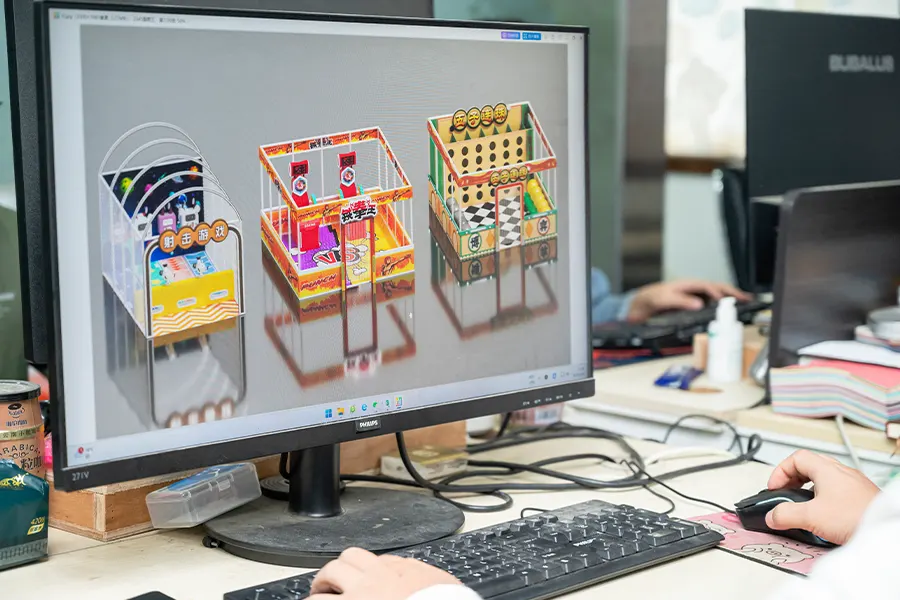
Designing custom soft play equipment is a carefully coordinated process, from initial planning to final delivery. Here’s a detailed look at each step to ensure a seamless, high-quality play environment.
Step 1: Precision Planning
The design process begins with gathering essential layout details to make the most of every square meter. By requesting accurate floor plan dimensions, including net length, width, height, and entrance points, designers can customize the play space to fit precisely. Information on fixed elements—like column positions and sizes, restroom locations, and additional amenities such as coffee shops—is crucial to creating a balanced, accessible, and visually appealing design.
Step 2: Plan Space Layout
Once layout specifics are defined, designers develop an optimized plan for different play areas, ensuring each zone serves a clear purpose. With dedicated zones for active play, sensory exploration, and rest areas, the space becomes a well-rounded, inclusive environment where children of all ages and abilities can engage comfortably.
Step 3: Choose a Theme and Aesthetic
A strong theme, whether it’s an enchanted forest, underwater adventure, or urban cityscape, immerses children in a magical environment. Beyond creating visual appeal, cohesive themes contribute to brand identity, making the play space memorable. The choice of colors, textures, and shapes in line with the theme adds depth and keeps children engaged while complementing the facility’s overall atmosphere.
Step 4: CAD Design in 3 Days
With floor plans and theme choices confirmed, a CAD (Computer-Aided Design) drawing is created within approximately three days. For instance, a 300-square-meter indoor playground is generally completed within this timeframe, with precise detailing of each element and play zone. This CAD blueprint offers a 3D view of the planned play space, allowing clients to visualize the final layout, and request any needed adjustments before production.
Step 5: Efficient Production in 20 Days
The production phase, typically taking between 20 to 45 days, is carried out by expert teams who prioritize quality at every stage. Manufacturers will use non-toxic, and child-safe materials to ensure each piece meets high safety and quality standards. This phase incorporates advanced production techniques, adding interactive elements like sound, touch-responsive panels, and light effects to keep children engaged and stimulated.
Step 6: Swift Delivery in about 28 Days
Once production is complete, the custom soft play equipment is ready for shipping within approximately 28 to 45 days. Fast, efficient delivery means your playground can be operational in no time, bringing excitement to families eagerly awaiting a fun, safe, and beautifully crafted play area. This quick turnaround allows businesses to open their doors sooner, transforming empty spaces into vibrant play destinations for children and families alike.
Do You Need Soft Play Designers? Can You DIY?
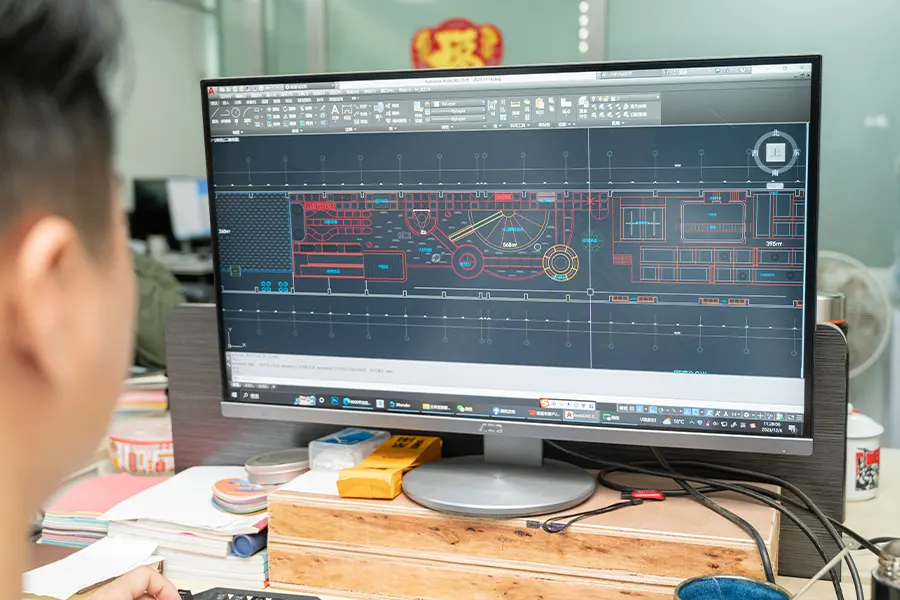
While designing a soft play zone might appear straightforward, involving experienced soft play designers can save time and ensure superior results. Professionals bring expertise in spatial optimization, compliance with safety regulations, and familiarity with the latest design trends. They can seamlessly integrate elements that are safe, attractive, and engaging for children, enhancing the value of your investment.
However, for those who feel confident in their vision, DIY options exist, although they may be more challenging in terms of securing quality materials, meeting regulatory standards, and implementing complex design ideas effectively.
How Much to Design Indoor Play?
Here’s a general cost breakdown for popular indoor play area sizes to help guide planning in the soft play business.
| Play Area Size | Estimated Play Zoon Setup Cost | Details |
| Small (100-200 sq. m) | $10,000 – $30,000 | Basic setup with standard play structures, simple layouts, suitable for small spaces in cafes or retail stores. |
| Medium (200-400 sq. m) | $30,000 – $80,000 | Mid-sized setup with interactive elements, custom themes, and varied play zones, ideal for community centers or standalone play areas. |
| Large (400-600 sq. m) | $80,000 – $150,000 | Extensive customizations, multi-level structures, and sensory zones, suited for large commercial facilities or dedicated indoor playgrounds. |
| Extra Large (600+ sq. m) | $150,000 – $300,000 or more | Premium installations with advanced interactive technology, intricate themes, and specialized zones for toddlers, sensory play, and active play areas. |
Key Considerations for the Best Soft Play Design
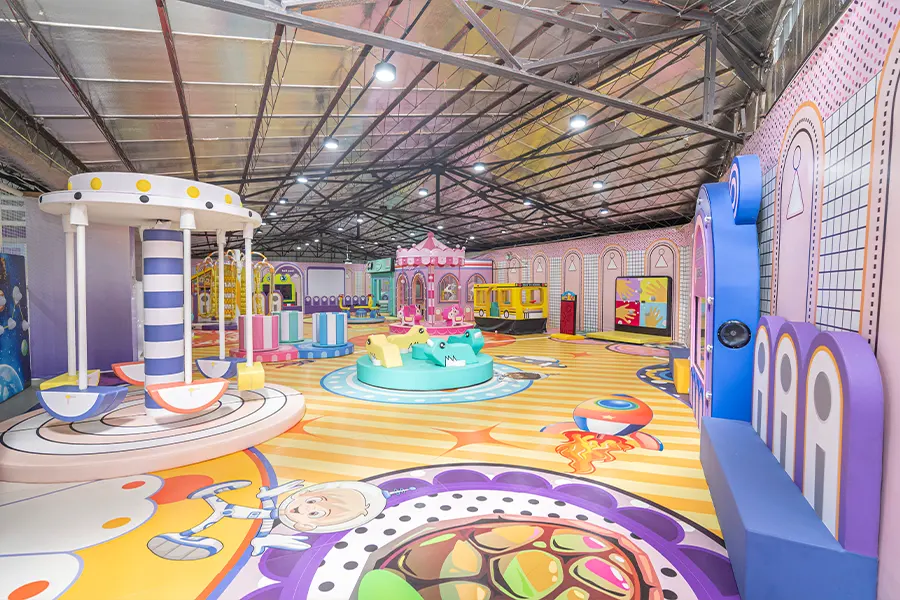
An ideal soft play space involves carefully balancing several elements to maximize engagement, safety, and overall enjoyment. Each component enhances the play experience and ensures the area is both practical and appealing for all age groups. Below are the crucial factors to consider:
Age-appropriate Design
Separate zones for toddlers, preschoolers, and older children allow each age group to engage safely at their skill level. Age-appropriate structures, such as low-sensitivity sensory walls for toddlers and obstacle courses for older kids, encourage skill-building and play without overwhelming or under-stimulating any group.
Space Utilization
Effective space utilization is essential, especially in commercial settings with limited square footage. Every corner can be creatively used for activities, storage, or interactive features. Vertical structures, multi-level platforms, and modular units maximize play options without overcrowding, ensuring a dynamic yet accessible layout that accommodates both children and supervising adults.
Theme and Aesthetics
Thematic designs enrich the play environment, creating immersive worlds that capture children’s imaginations. Whether it’s a jungle, space adventure, or underwater theme, cohesive aesthetics provide a visually stimulating atmosphere. Colors, textures, and decor should align with the theme, blending playful appeal with quality craftsmanship to create a memorable play experience.
Accessibility
Accessible design ensures that children of all abilities can enjoy the play area. This includes wheelchair-friendly ramps, sensory-friendly zones, and multi-sensory elements that support inclusivity. By considering various needs, from physical accessibility to sensory preferences, soft play areas foster a welcoming environment for everyone, encouraging diverse participation.
Interactive Elements
Incorporating interactive elements like sensory walls, touch-activated lights, or motion-responsive games makes play dynamic and engaging. These elements promote physical movement, cognitive development, and social interaction, transforming the play area into a lively, responsive space where children can explore and learn through active play.
Customization Options
Customization allows soft play designs to reflect a unique vision, meeting specific branding or thematic preferences. Customization can include unique play structures, branded color schemes, or exclusive themes that set the play area apart from others. Tailored designs enhance user experience and help build a distinct identity for the space.
Safety Features
Safety is paramount in soft play design. Essential features include impact-absorbing flooring, rounded edges, and non-slip surfaces to minimize the risk of injury. Safety padding and secure attachments are necessary for structures like slides, climbing walls, and soft play equipment. A focus on safety not only protects children but also builds parental trust in the facility.
Material Quality
High-quality materials ensure durability, comfort, and safety. Non-toxic, flame-retardant, and hypoallergenic materials are crucial for child safety and well-being. Selecting eco-friendly or recyclable materials also aligns with sustainability trends, which can appeal to environmentally conscious parents and set a positive example for the younger generation.
Durability and Maintenance
Durable play structures withstand the wear and tear of frequent use, reducing the need for constant repairs. Materials resistant to scratches, stains, and moisture help maintain the area’s appearance and functionality. Low-maintenance, easy-to-clean surfaces, like antimicrobial vinyl or waterproof finishes, keep the play area hygienic and reduce downtime.
How Beslepark Can Help?
As leading soft play equipment suppliers, Beslepark specializes in creating custom, patent-protected designs tailored to your specific needs. Our team transforms your vision into unique play environments, incorporating interactive, theme-based, and age-appropriate elements that captivate children and align with your business goals. Here’s how we support you through every stage:
- Innovative Design Solutions: Beslepark’s designers work closely with you, integrating your ideas and preferences into exclusive, imaginative play experiences. Our customized designs stand out, giving your space a unique appeal that keeps visitors returning.
- Support for Small and Medium-sized Businesses: We understand the unique challenges these businesses face, from budgeting to effective space usage. Beslepark offers multi-marketing advice and practical solutions tailored to help you thrive in a competitive market.
- Patent-Protected Play Structures: Our patent-protected designs ensure your play space remains distinctive, allowing you to offer experiences unavailable anywhere else, setting your business apart.
- Comprehensive Multi-Marketing Assistance: Beyond design, we help you promote your playground with expert advice on branding and marketing strategies, ensuring your space reaches a wide audience and grows successfully.
Conclusion
Custom soft play equipment designs offer endless potential to create spaces where children can learn, grow, and explore in safety and style. As 2025 trends lean into themes of inclusivity, nature-inspired designs, and technology integration, businesses have an exciting opportunity to elevate their play zones. With expert guidance and carefully considered choices, you can design a play area that captivates families and keeps them coming back for more.

